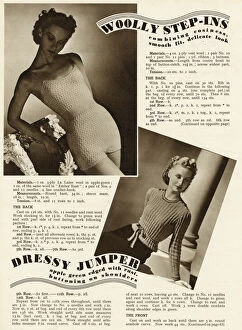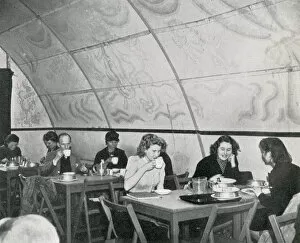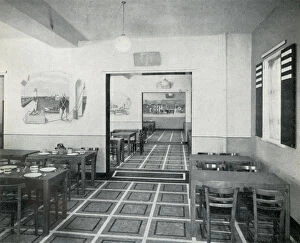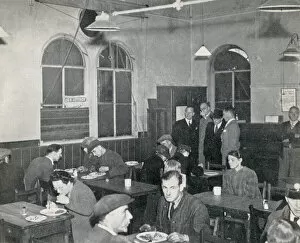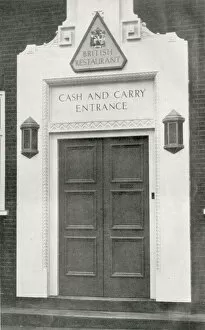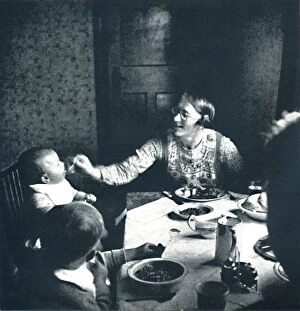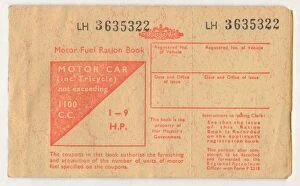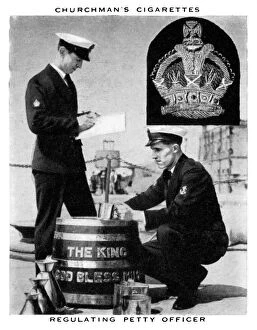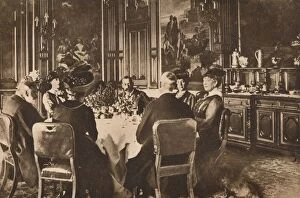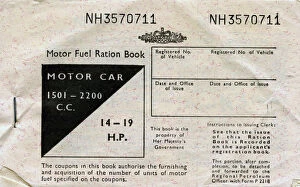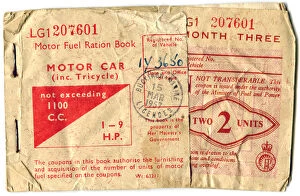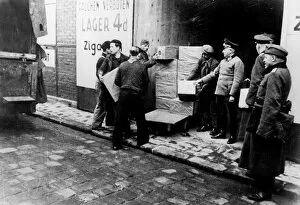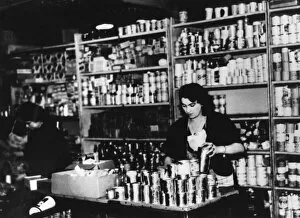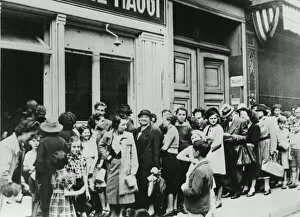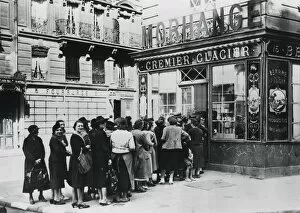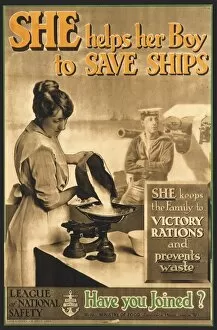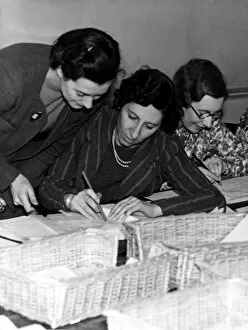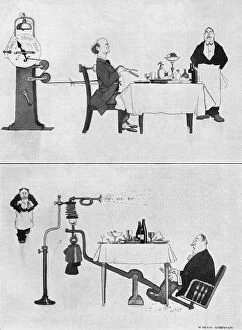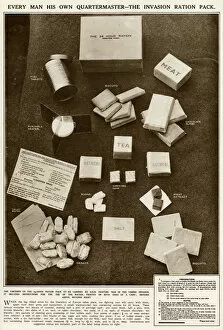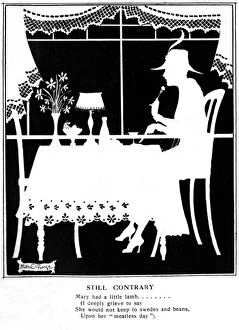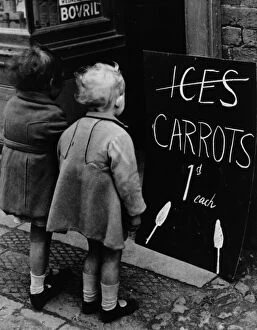Rationing Collection (#6)
"Rationing: A Journey through History's Scarce Resources" Poster, The Vegetabull: In times of scarcity
For sale as Licensed Images
Choose your image, Select your licence and Download the media
"Rationing: A Journey through History's Scarce Resources" Poster, The Vegetabull: In times of scarcity, even vegetables become the heroes on posters encouraging rationing during World War I. Salvation Army / WWI: Amidst the chaos of war, the Salvation Army played a crucial role in distributing rations to those in need, ensuring no one went hungry. Dig for Victory poster - WWII: Gardens became battlegrounds as citizens were urged to grow their own food during World War II to alleviate pressure on rationed supplies. Christian Dior sketching a fashion design, 1948: Even haute couture felt the impact post-WWII; designers like Dior had to adapt and create within limited resources. WWII Clothing Coupons: Fashion took a backseat as clothing coupons dictated what people could purchase during wartime shortages – frugality became fashionable. Save Food Poster / WWI: Powerful imagery reminded civilians that every morsel counted during World War I – saving food meant supporting troops and winning the war. Save Food / WWI Poster: With patriotic fervor, posters urged citizens not to waste precious resources but instead contribute towards victory by conserving food supplies. Don't Waste Bread WWI: As bread symbolized sustenance and unity, campaigns against wasting it aimed at instilling responsibility among civilians during World War I. Apres la Guerre No. 3 - WWI postcard by George Ranstead: This poignant postcard captured both hope and resilience after the Great War when rationing began easing its grip on society's daily life. Wartime poster for conserving clothes and food : Striking visuals encouraged citizens to conserve both clothes and food alike as essential commodities faced scarcity due to conflict demands. Ration Book July 1942 .




